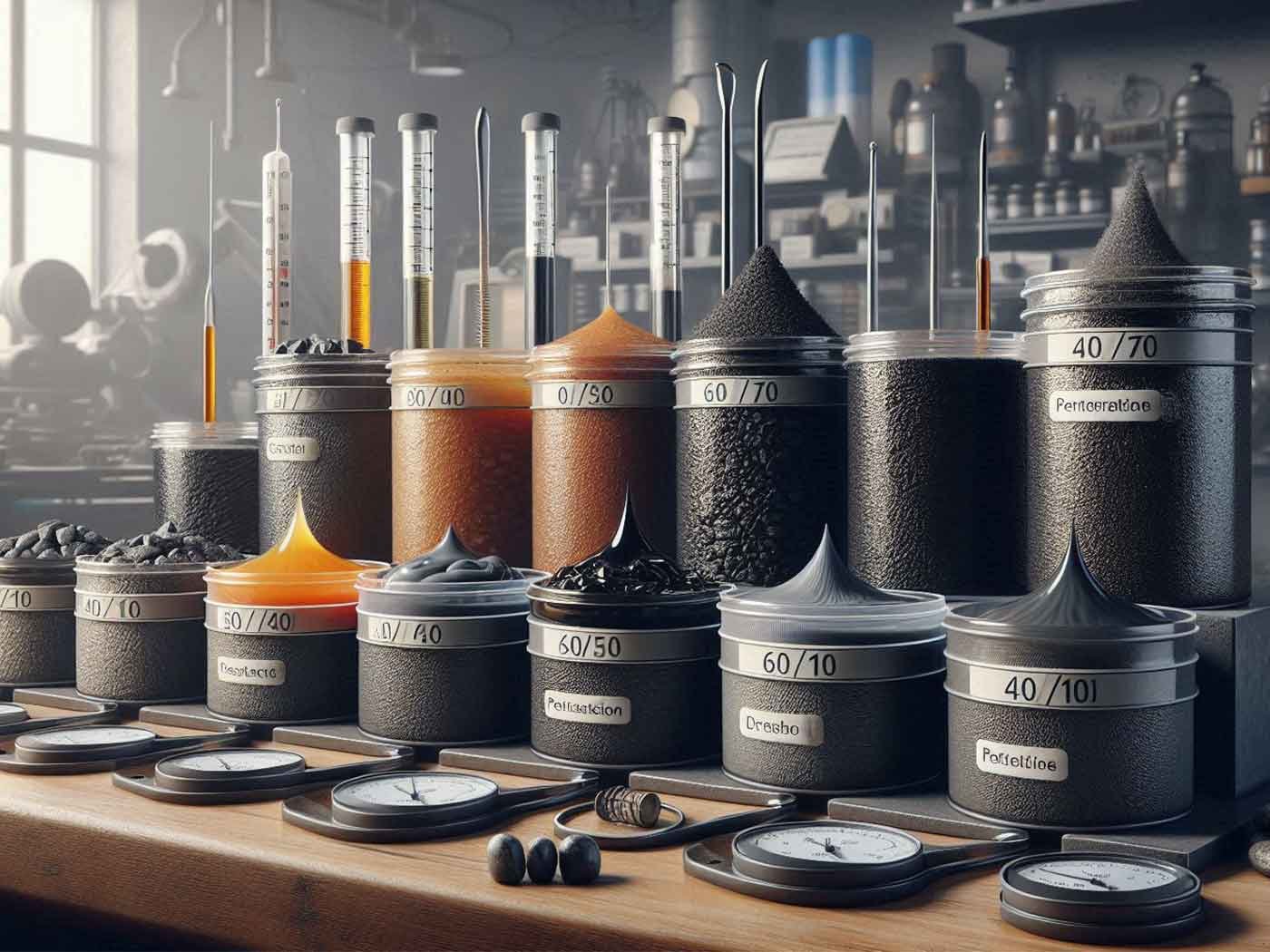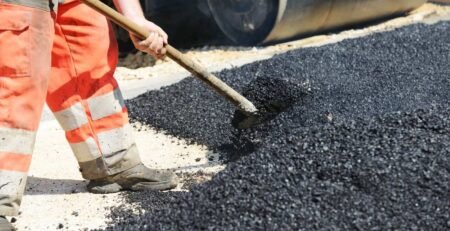Which Grade of Bitumen is Harder?
It can be very helpful to know which grade of Bitumen is harder. Some factors will help determine this hardness, such as penetration, viscosity, temperature, chemical composition, and the softening point. There are some common grades of bitumen, such as bitumen 60/70, bitumen 80/100, and bitumen 40/50, and some oxidized bitumen grades, such as bitumen 150/5 and bitumen 115/15. Bitumen hardness is measured using different methods, especially penetration grade testing. The right choice of bitumen between harder grades and softer grades is essential for having a long service life.
What Factors Determine the Hardness of Bitumen?
According to Bituchem, several factors determine which grade of bitumen is harder. The hardness of bitumen depends on some critical features, which you can see below. Understanding these few factors will greatly help you choose the most suitable and appropriate bitumen grade for your project.
Penetration
The penetration test is taken under specific conditions. It determines the depth that a standard needle penetrates into the bitumen sample. If the result of the test is bitumen with a lower penetration value, the bitumen is harder, while the softer bitumen has a higher penetration value.
Viscosity
The thickness and resistance to fluid flow indicate the viscosity. The higher viscosity means the bitumen shows more resistance to flow, which means it is harder. On the contrary, the softer bitumen has a lower viscosity.
Temperature
Bitumen has different hardness levels at different temperatures. A rise in the temperature leads to bitumen softness, and lower temperatures make it harder. Temperature is an essential factor in determining bitumen functionality for applications in different climates.
Chemical Composition
Bitumen contains asphaltenes, maltenes, and other contents that affect its hardness. Asphalt grade differences will also make a difference in bitumen hardness grade. The chemical compositions can vary due to the crude oil sources or the refining process. It directly affects the bitumen hardness level, and it can help determine which bitumen grade is harder.
Softening Point
The softening point of bitumen is related to the temperature. It shows the temperature that makes the bitumen transition from solid/semi-solid to liquid/semi-liquid. As the softening point gets higher, the hardness level of bitumen increases, too.
What Are Common Grades of Bitumen in the UAE?
After knowing the answer to the question of which grade of bitumen is harder, it is time to learn about the most common grades of bitumen, especially in the UAE. In fact, these grades are classified based on the penetration grade of bitumen.
- Bitumen 60/70: Bitumen 60/70 is considered a semi-hard grade. This is the used bitumen for road construction projects. The reason is that this bitumen grade has the proper balance between hardness and elasticity.
- Bitumen 80/100: This grade is a relatively softer bitumen grade that is widely used in cold climates. They are used specifically for applications where high flexibility is crucial. The lower hardness level helps with the increased flexibility.
- Bitumen 40/50: Bitumen 40/50 is a fairly hard bitumen grade. This grade is applied for heavy-duty applications. It is also the proper solution for projects and applications in regions with hot climates.
- Oxidized Bitumen 150/5: Oxidized bitumen 150/5 is considered one of the hardest grades. It shows perfect resistance to temperature changes. This type is widely used in industrial applications, such as coatings and roofing.
- Oxidized Bitumen 115/15: This grade of oxidized bitumen is a semi-hard one, which is mainly used in applications such as paving, roofing, and waterproofing.
- Oxidized Bitumen 95/25: This oxidized grade is mainly used in the manufacturing process of roofing membranes, sealants, and adhesives.
- Oxidized Bitumen 85/40: Oxidized bitumen 85/40 is a grade with proper resistance to temperature variations. It is also widely used in various industries, such as pipe coating, roofing, and, more importantly, road construction.
- Oxidized Bitumen 75/30: This grade is especially known for its high softening point. It is mainly used in the production process of hot-mix asphalt, sealants, and also waterproofing materials.
- Oxidized Bitumen 65/25: Oxidized bitumen 65/25 is a softer oxidized grade of bitumen. This grade is generally used in the manufacturing of waterproofing products, coatings, and pavement materials.
How Is Bitumen Hardness Measured?
Bitumen hardness is measured using different methods, mainly the penetration grade testing method. Penetration grade testing determines the hardness and consistency of bitumen. The right choice between these grades ensures the longevity of asphalt.
Sample Preparation
In this step, a bitumen sample is heated to 25°C or 77°F, which is the standard temperature. Then, it is poured into a standard container. The process goes on by cooling the sample to the test temperature, which is normally 25°C. A flat surface must be created by removing excess material.
Penetration Test
Referring to Infinity Galaxy, the test is taken by a penetrometer device being placed on the sample’s surface. This device consists of a needle with a standard weight. The needle must be released for a couple of seconds so that it penetrates the sample.
Classification
After the penetration value is measured, the bitumen is classified into several grades. The lower the penetration value is, the bitumen is harder. For instance, a 60/70 grade bitumen means that the penetration value is between 60 to 70 dmm.
Application
This test helps indicate the suitability of a specific bitumen grade for each application. Harder bitumen grades are mainly suitable for heavy-duty applications with high temperatures. However, softer grades show more flexibility in cold climates.
Which Bitumen Grade is Right for You?
A proper bitumen grade comparison will be highly effective in choosing the right grade. This decision depends on the application and the regional climate. Harder and softer grades can be suitable for various applications.
Harder Grades
Harder grades, such as 40/50, are mainly suitable for heavy-duty applications, such as airports or highways. They have higher resistance to deformation, being suitable for hot climates. Harder grades have some significant advantages.
- Higher resistance to shoving and rutting
- Higher load-bearing capacity
- Higher durability in high temperatures
Softer Grades
Softer grades, like 80/100, show more ductility, which makes them suitable for cold climates. These grades are less prone to cracking. Here are some main advantages that they offer.
- Higher workability during construction
- Higher resistance to cracking
- Higher compatibility with the materials in asphalt mixes
Conclusion
It is important to know which grade of bitumen is harder to choose the most suitable grade for specific applications. There are several Bitumen Suppliers in the UAE; however, choosing the right one will help increase the longevity and reliability of the project.












Leave a Reply